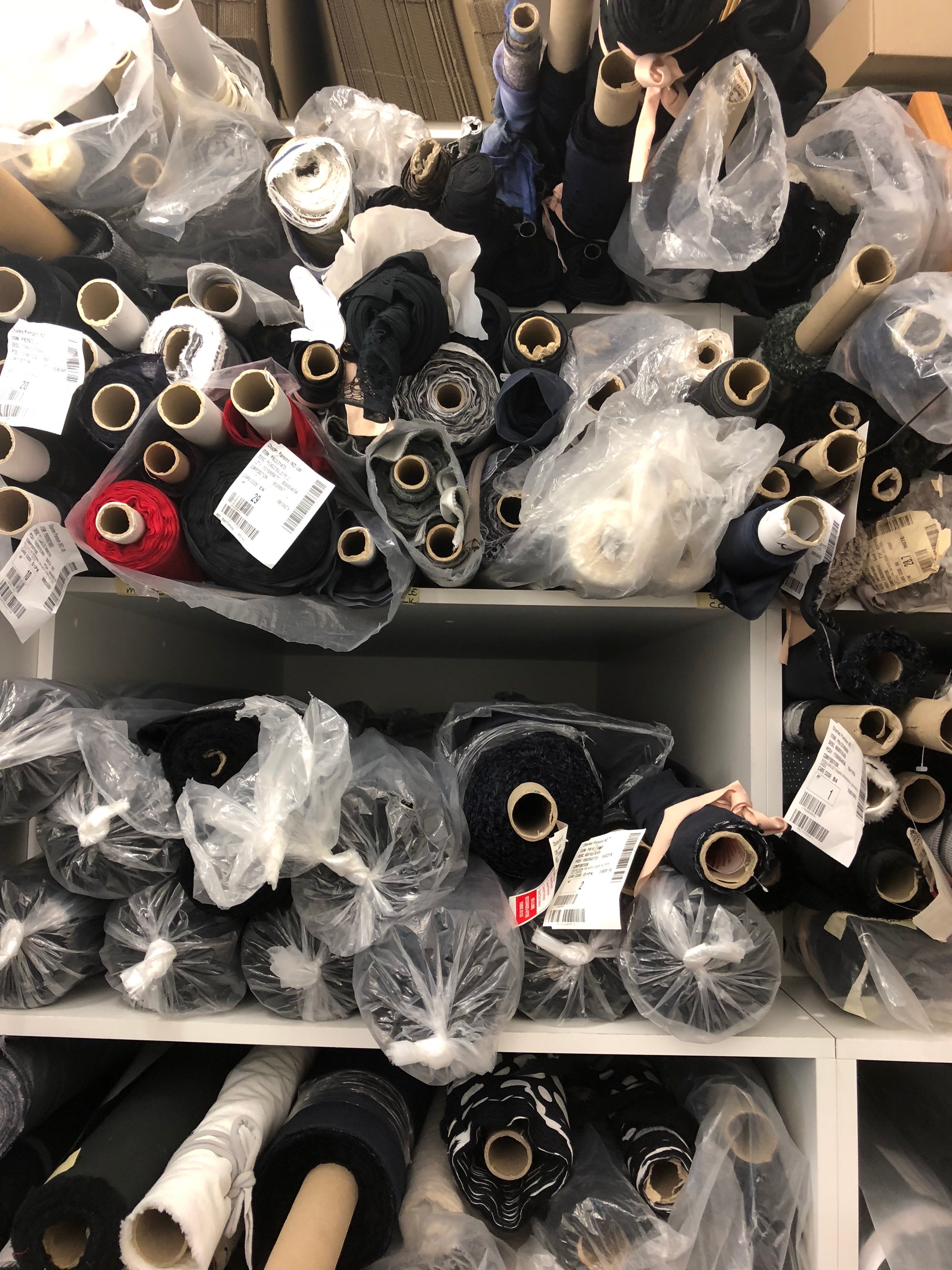What is Deadstock fabric? Mass overproduction in the Fashion Industry
•Posted on April 10 2019

Deadstock fabric is a term becoming more common lately as people are more aware of the waste in the Fashion industry. What it means is that the fabric is excess from a large order, or rejected by the company who ordered it due to colour variation etc or any number of reasons. When fabric is made, especially woven fabrics, the machinery is set up to make a large quantity, so extra on top of what is required is made. This excess fabric is often unsold by the mill, therefore this is another part of the mass overproduction in the fashion industry.

(This Italian cotton fabric was a Deadstock fabric. As we only had a small amount I cut it in house to make bags)
Many small labels make use of this Deadstock fabric as they can buy assorted fabric in smaller quantities and put this excess fabric to use. There is a lot of debate about whether it's an 'eco' option or not. To me, using fabric that is excess or overproduced already has to be a 'green' or 'eco' choice as long as the fabric is good quality and it's not then overproduced into garments. Another thing with Deadstock fabric is that it is limited, the quantity available at that time is all there is going to be, no repeats.
It's all about only producing what you can sell, not overproducing and then reducing the price to move it on, to then overproduce more styles (continuing the unsustainable cycle of overproduction again and again). We have had a very hard look over the past few years at what we sell, how many garments we need to produce and only making that number. This plan came into action in 2017 when we had enough information from our inventory software to pin point exactly how many pants we sell each year, what sizes we sold most, how many long sleeved tops versus sleeveless tops etc. Our production is worked out with this in mind and if we sell out and have more fabric we then make some more. This way we never overproduce which I feel is one of the main causes of waste in the fashion industry (some large companies have shockingly even been found to burn excess stock).

(The Ritual pants are made from Deadstock fabric)
On average we make 30 - 100 garments of each style, over the sizes and colours. That means we only make 3 garments in each size and colour of some styles, so our production is tiny compared to the amounts you are committed to order from overseas manufacturers.

(The Seer Vest is made from Deadstock fabric)
This season we purchased some Deadstock fabric from a supplier who closed down after 50 years in business. It's a high quality viscose fabric similar to one we have used many times before because it drapes beautifully and lasts for a long time. I designed a vest and pants to be made in this fabric and also found it was perfect to create the skirt part of my new Druid dress style. I have a nice supply of this fabric now in my fabric storage room, so I can use it to add fullness and drape in a style and as deadstock is usually a cheaper price I am able to indulge in higher meterage styles without making a garment end up with a high price tag.

I hope this helps explain some of the new terms used in the ever evolving fashion industry.
Cheers,
Sarah
Comments
0 Comments
Leave a Comment